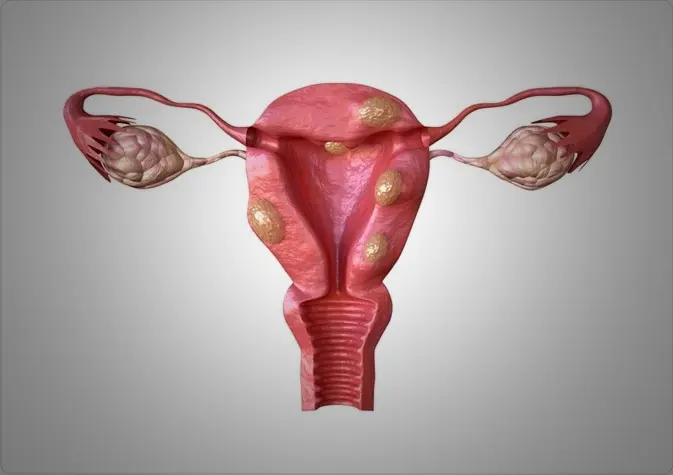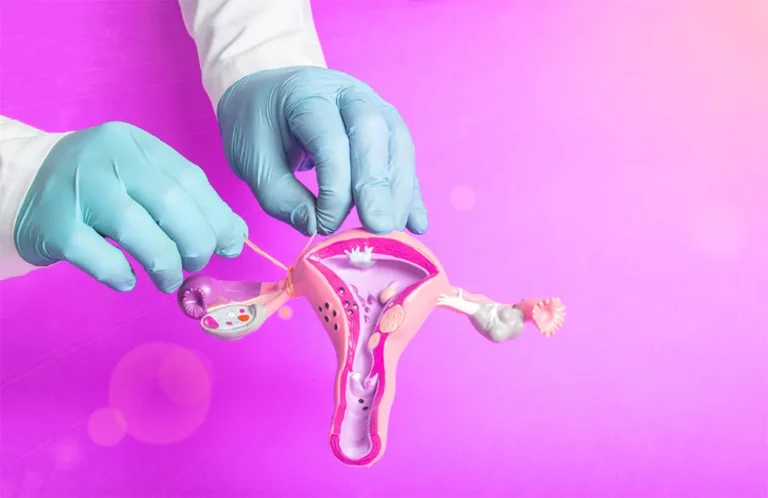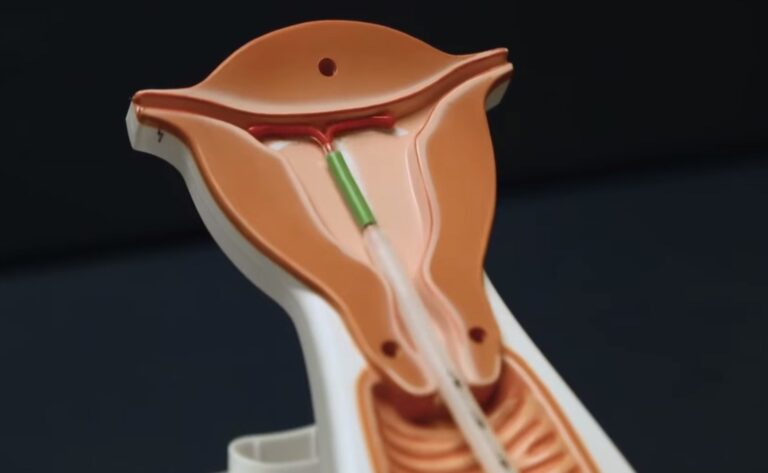Minimally Invasive Solutions: Hysterectomy Alternatives for Uterine Fibroids
Understanding Fibroids and Their Impact
Fibroids, also known as uterine fibroids are non-cancerous tumors that arise in the muscular tissue of the uterus. These tumors can vary in size, ranging from tiny seeds to large grapefruits. Although fibroids are generally not cancerous, they can cause various symptoms and discomfort in women who experience their development.
The exact cause of fibroids is not fully understood but hormonal imbalances, particularly estrogen and progesterone, are believed to play a significant role in their development. These hormones can promote the growth of fibroids, causing them to increase in size over time.

The symptoms of fibroids can differ widely among women. While some may not experience any noticeable symptoms, others may encounter significant challenges that disrupt their daily lives. Typical fibroid symptoms encompass heavy or prolonged menstrual periods, pelvic pain or pressure, frequent urination, constipation, backache, and discomfort during sexual intercourse.
Treatment options for fibroids can range from conservative management approaches to more invasive surgical interventions. Conservative management may involve regular monitoring of the fibroids and lifestyle modifications to manage symptoms. Medications, such as hormonal drugs, can also be prescribed to regulate menstrual cycles and reduce bleeding.
When fibroids lead to substantial symptoms or complications, more advanced treatment options may be explored. Surgical interventions, such as myomectomy or hysterectomy, could be advised in such cases. Myomectomy involves surgically removing fibroids while preserving the uterus, which is suitable for women who desire to maintain their fertility. Conversely, hysterectomy involves the complete removal of the uterus and is considered a definitive solution for fibroids, particularly when fertility is not a consideration.
Minimally invasive procedures, including laparoscopic hysterectomy and uterine artery embolization (UAE), have become viable alternatives to conventional open surgeries. Laparoscopic hysterectomy entails making small incisions and utilizing specialized surgical instruments to extract the uterus. On the other hand, UAE is a non-surgical procedure that involves injecting tiny particles into the uterine arteries to obstruct blood flow to the fibroids, resulting in their shrinkage.
Uterine Fibroid Treatment Options
When it comes to treating fibroids, there is a range of options available that can be tailored to the specific characteristics of the condition. Factors such as the size, location, and severity of the fibroids play a crucial role in determining the most suitable treatment approach. Let’s explore some of the common treatment options for fibroids:
Conservative Management: When fibroids are small and not causing significant symptoms, a conservative management approach can be pursued. This usually includes regular monitoring of the fibroids through pelvic examinations and ultrasounds. Making lifestyle adjustments, such as maintaining a healthy weight, engaging in regular exercise, and managing stress, can also contribute to symptom relief.
Medications: Medications can be prescribed to manage specific symptoms associated with fibroids. For example, nonsteroidal anti-inflammatory drugs (NSAIDs) may be recommended to relieve pain and reduce menstrual cramping. Hormonal medications, such as oral contraceptives or progestin-releasing intrauterine devices (IUDs), can help regulate menstrual cycles and decrease heavy bleeding.

Myomectomy: Myomectomy is a surgical procedure aimed at removing the fibroids while preserving the uterus. This option is suitable for women who desire to retain their fertility or prefer not to undergo a hysterectomy. Myomectomy can be performed through various approaches, including abdominal myomectomy (through a larger abdominal incision), laparoscopic myomectomy (using minimally invasive techniques and small incisions), or hysteroscopic myomectomy (removing fibroids through the cervix and vagina).

Hysterectomy: Hysterectomy is a definitive treatment for fibroids, involving the total removal of the uterus. It is commonly suggested for women experiencing severe symptoms, large fibroids, or those who are not concerned about preserving fertility. Hysterectomy can be performed using various techniques, including abdominal hysterectomy (via a larger incision in the abdomen), laparoscopic hysterectomy (using small incisions and specialized instruments) or vaginal hysterectomy (removing the uterus through the vagina).
Uterine Artery Embolization (UAE) is a highly effective and minimally invasive procedure, expertly carried out by interventional radiologists. By carefully injecting minuscule particles into the uterine arteries, which directly supply blood to the fibroids, UAE successfully obstructs the blood flow. As a result, the fibroids gradually reduce in size over time. UAE presents a viable choice for women who desire to circumvent surgery or have multiple fibroids dispersed across various locations.

MRI-guided High-Intensity Focused Ultrasound (MRgFUS): This non-invasive technique uses focused ultrasound waves to generate heat and destroy the fibroids. MRgFUS is performed under the guidance of magnetic resonance imaging (MRI), allowing precise targeting of the fibroids while sparing the surrounding healthy tissue. It is a relatively new treatment option and may not be suitable for all types and sizes of fibroids.
Endometrial Ablation: Endometrial ablation is a procedure that targets the destruction of the endometrium, the lining of the uterus. Nevertheless, its primary purpose is not the removal of fibroids, it can be considered for women with small fibroids who suffer from heavy menstrual bleeding. However, it is generally not recommended for women who desire to preserve their fertility.
Hysterectomy
In cases where fibroids are large, leading to severe symptoms, or when fertility is not a consideration, healthcare professionals may suggest a hysterectomy as a treatment option. Hysterectomy involves surgically removing the uterus and, in certain instances, the cervix as well.
There are different types of hysterectomy procedures that can be performed based on the specific circumstances and needs of the patient:
- Total Hysterectomy: This procedure involves the complete removal of the uterus, including the cervix. It is the most common type of hysterectomy performed.
- Vaginal Hysterectomy: With the aim of removing the uterus, a vaginal hysterectomy is a surgical intervention that uniquely extracts the uterus through the vaginal canal, eliminating the need for any abdominal incisions. One remarkable advantage of this approach is the complete absence of visible scarring on the abdominal region, yielding a highly desirable aesthetic result when compared to alternative methods.
- Abdominal Hysterectomy: When the removal of the uterus is required, an abdominal hysterectomy is performed by making an incision in the abdomen. This method is typically chosen in cases where the uterus is considerably enlarged or when additional procedures, such as the extraction of fibroids or other pelvic organs, are deemed necessary.
- Laparoscopic Hysterectomy: Laparoscopic hysterectomy is a minimally invasive procedure conducted with the use of small incisions and specialized surgical instruments. One of the incisions accommodates a laparoscope, a slender tube equipped with a camera, which provides visualization of the surgical area. This technique presents several benefits, including smaller incisions, decreased blood loss, and faster recovery in comparison to traditional open fibroid surgery.
Hysterectomy for fibroids: Recovery Time
Recovery time following a hysterectomy can vary depending on the type of procedure performed and individual factors. It’s important to discuss recovery expectations with your healthcare provider. Generally, the following aspects should be considered:
Hospital Stay: The length of hospitalization can range from a few days to a week, depending on the procedure and individual circumstances.
Postoperative Care: Following a hysterectomy, it is essential to provide appropriate wound care, manage pain effectively, and adhere to activity restrictions to ensure a seamless recovery.
Resuming Daily Activities: Returning to regular daily activities, such as work and exercise, may take several weeks. It is important to follow the guidance provided by your healthcare provider during this time.
Hormonal Changes: If the ovaries are removed during the hysterectomy, women may experience menopausal symptoms. In such cases, hormone replacement therapy can be considered to address these symptoms.
Conclusion
In conclusion, hysterectomy is one of the treatment options available for managing fibroids, particularly when they cause significant symptoms or affect quality of life. However, it’s important to consider the individual circumstances and discuss with a healthcare provider to determine the best course of action. Each treatment option has its own benefits and considerations. By understanding the available options and recovery expectations, women can make informed decisions regarding their fibroid treatment journey.
It’s also important to note that the keywords mentioned throughout this article are not exhaustive, and there may be other relevant terms and concepts related to hysterectomy for fibroids. Understanding the complexities of fibroids and the available treatment options requires expert medical knowledge.
Additionally, seeking a second opinion can be valuable when considering a hysterectomy or any significant medical procedure. Obtaining different perspectives from healthcare professionals can help you make an informed decision about your healthcare.
Remember that each person’s experience with fibroids and their treatment journey is unique. While some women may require a hysterectomy, others may find relief through alternative treatments. It is crucial to explore all available options, discuss potential risks and benefits, and consider your own personal preferences and circumstances.
In summary, the choice to undergo a hysterectomy for fibroids is a substantial decision that should be made in collaboration with your healthcare provider. By acquiring knowledge about the available treatment options, considering the recovery period, and seeking professional advice, you can make an informed decision that prioritizes your health and overall well-being.
Remember, in dealing with fibroids, acquiring knowledge and staying aware of the condition are paramount. Make a conscious effort to stay well-informed, empowering yourself with the necessary information to effectively manage fibroids. Be an advocate for your own health, actively participating in decisions related to your care and treatment. Seek the support and guidance of healthcare professionals who specialize in fibroid management, benefiting from their expertise and experience. By remaining engaged in your healthcare journey and collaborating with knowledgeable professionals, you can navigate the challenges posed by fibroids more effectively and improve your overall well-being.
FAQs
How do I know if I need treatment for my fibroids?
If you experience symptoms like heavy or prolonged bleeding, pelvic pain, or reproductive issues due to fibroids, it is advisable to seek guidance from fibroid experts or healthcare professionals.
Can fibroids be treated without undergoing a hysterectomy?
Yes, depending on the size, location, and symptoms caused by the fibroids, treatment options such as myomectomy or uterine fibroid embolization may be considered as alternatives to hysterectomy.
Can fibroids shrink without a hysterectomy?
Yes, some fibroids may naturally shrink and die off as a woman approaches menopause due to hormonal changes. Additionally, treatment options like uterine fibroid embolization can cause fibroids to shrink by cutting off their blood supply.
Will a hysterectomy completely eliminate fibroid pain?
Yes, a hysterectomy involving the surgical removal of the entire uterus will effectively remove fibroids, eliminating fibroid related pain. However, it is important to discuss all treatment options with a healthcare professional to make an informed decision.
Can fibroids be located in different parts of the uterus?
Yes fibroids can be located in different areas of the uterus, such as submucosal fibroids that grow inside the uterine cavity or intramural fibroids that develop within the uterine wall.


